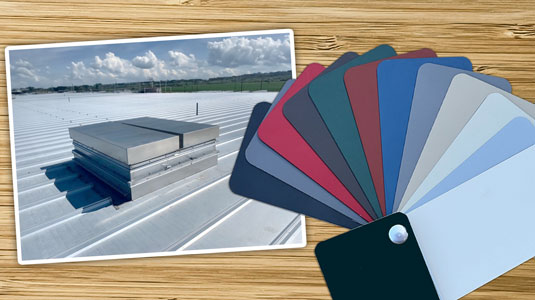Selecting the best architectural smoke vents is a critical decision for any architect or building owner. These vents play a vital role in ensuring the safety of occupants during a fire emergency. However, with a wide range of options available in the market, making the right choice can be challenging. In this comprehensive guide, we will walk you through the key factors to consider when selecting architectural smoke vents. Our goal is to provide you with the knowledge and confidence to make an informed decision, prioritizing safety above all else.

The Importance of Architectural Smoke Vents
Before delving into the factors to consider when selecting architectural smoke vents, it’s essential to understand their significance. Architectural smoke vents are designed to release smoke and heat in the event of a fire, helping to maintain visibility and reduce the risk of smoke inhalation. They also aid firefighters in their efforts to control and extinguish the fire. In short, these vents can be lifesavers in an emergency situation.
Key Factors to Consider
-
- Building Type and Purpose: The type of building and its intended use are fundamental factors when choosing smoke vents. Different buildings may have varying requirements based on factors like occupancy load and fire safety codes. For instance, a commercial cold storage warehouse may have different needs than a residential complex.
- Size and Location: The size and location of smoke vents are crucial. Vents should be strategically placed to ensure efficient smoke and heat evacuation. Moreover, their size should align with the building’s layout and occupancy. Consulting with a fire safety expert can help determine the optimal placement and size.
- Ventilation System Integration: Smoke vents should seamlessly integrate with the building’s ventilation system. Compatibility with existing HVAC systems and controls is essential for efficient operation during a fire event.
- Material and Construction: Select vents made from durable and fire-resistant materials. The construction quality directly impacts their performance and longevity. Investing in high-quality vents ensures they will withstand the test of time.
- Code Compliance: Adherence to local fire safety codes and regulations is non-negotiable. Ensure that the selected vents comply with the latest building codes in your area. Failure to do so can result in costly fines and, more importantly, compromised safety.
- Operation and Maintenance: Consider the ease of operation and maintenance when choosing architectural smoke vents. They should be user-friendly and require minimal upkeep to ensure they function correctly when needed.
- Manufacturer Reputation: Opt for smoke vents from reputable manufacturers with a track record of producing reliable and effective products. With over 60 Years of experience, R&S Manufacturing and Sales Smoke Vents have an unparalleled reputation for construction and quality.
- Budget: While safety should be the top priority, it’s essential to work within your budget constraints. Seek a balance between cost-effectiveness and quality to make a sound financial decision.
- Warranty and Support: Check the warranty offered by the manufacturer and the availability of customer support. A robust warranty and accessible support can provide peace of mind.
- Aesthetics: Although not as critical as safety and functionality, the appearance of architectural smoke vents can impact the building’s aesthetics. Choose vents that blend seamlessly with the architectural design.
Automatic Smoke Vents FAQs
Q: Are smoke vents required in all types of buildings?
A: No, the requirement for smoke vents varies depending on the building’s type, size, and intended use. It’s essential to consult local fire safety codes and regulations.
Q: Can smoke vents be retrofitted into existing buildings?
A: Yes, smoke vents can often be retrofitted into existing buildings to enhance fire safety. However, the feasibility of retrofitting depends on the building’s structural and architectural characteristics.
Q: How often should smoke vents be inspected and maintained?
A: Smoke vents should be inspected and maintained regularly as per the manufacturer’s recommendations and local regulations. Typically, inspections should occur at least annually.
Q: Do smoke vents require a power source to operate?
A: Smoke vents can be operated manually or automatically. Automatic smoke vents may require a power source, such as electricity or a backup generator, for seamless operation during a fire event.
Q: Can smoke vents be customized to match the building’s design?
A: Yes, many manufacturers offer customization options for smoke vents to ensure they align with the building’s architectural design.
Q: What should I do if my smoke vents malfunction during a fire?
A: In the event of a malfunction, contact the fire department immediately and evacuate the building following established fire safety protocols.
Conclusion
Selecting the best architectural smoke vents is a critical step in ensuring the safety of your building and its occupants. By considering factors such as building type, size, ventilation integration, and compliance with fire safety codes, you can make an informed decision. Remember to prioritize quality, durability, and ease of maintenance while staying within your budget. With the right smoke vents in place, you can enhance fire safety and protect lives.



